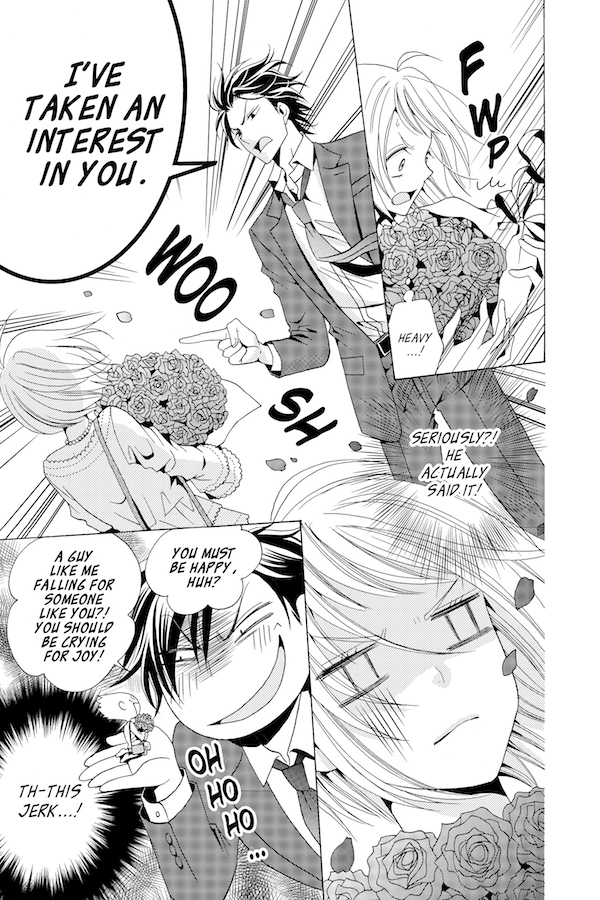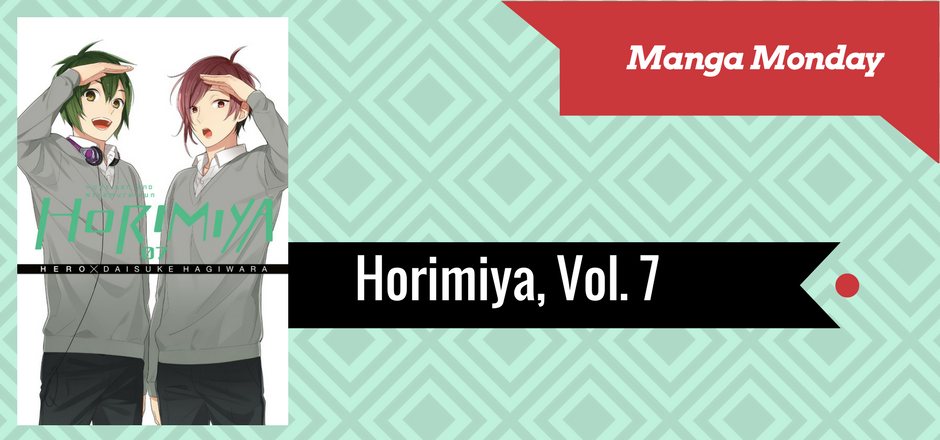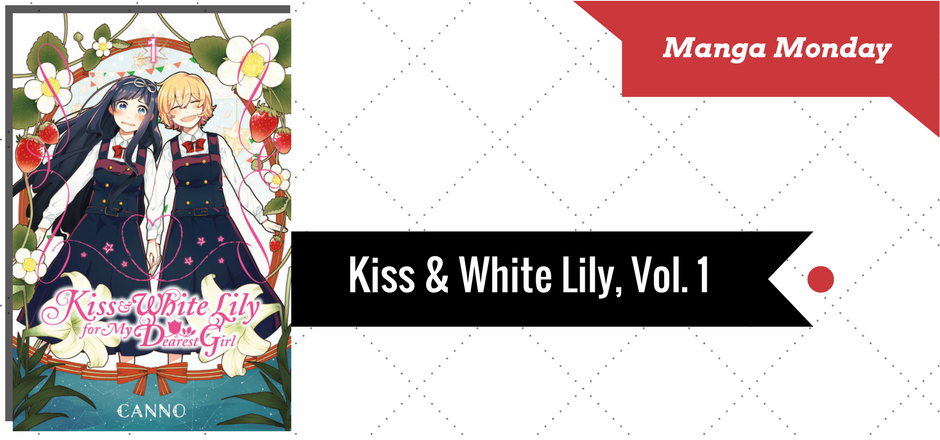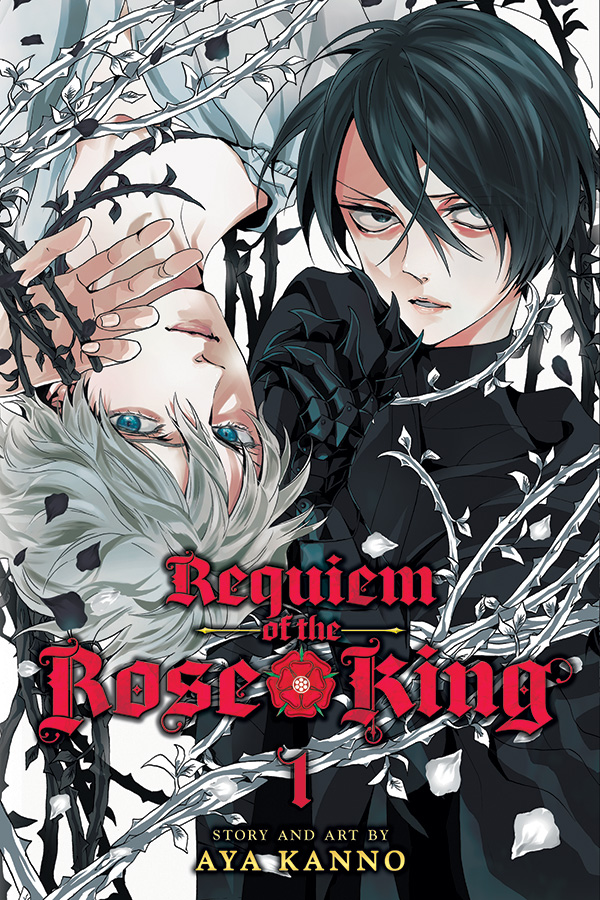Hana’s gorgeous but willful twenty-three-year-old older sister refuses to attend a marriage meeting, so Hana — dutiful daughter that she is — agrees to pretend to be the glamorous Yukari (and seven years older) for the sake of her father’s job. It seems simple enough, especially when the meeting with the boss’s son doesn’t go especially well — but then blunt and arrogant Takane shows up at Hana’s house with flashy roses and a flashier car.
One of Shojo Beat’s newest series is Yuki Shiwasu’s take on a common shojo manga trope: a commoner (Hana) gets romantically involved with a rich person (Takane). This style of romance manga tends to get repetitive: a clumsy commoner girl who is supposedly not very pretty manages to catch the eye of a rich dude (plus 3-6 other dudes to make it more dramatic).
Takane & Hana‘s first volume, though, manages to make the common-girl-meets-rich-guy plot feel fresh and new. The volume starts with Hana attending a marriage meeting while pretending to be her sister, Yukari.
(A marriage meeting, or omiai, is a formal introduction between two people to see if they could get married; while it’s described on the cover of the manga as “an arranged marriage meeting,” omiai is a little bit more like getting set up on a blind date or using a dating site. You can read more here.)
The meeting was arranged by her father’s boss — Takane’s grandfather — who saw Yukari one day and thought she was pretty enough for his grandson. Hana, who understands far better than Yukari that her father could get fired if she manages to offend his boss, has a plan to save her father’s job (and face): just get the guy to hate her, and he’ll move on.
It’s a pretty good plan, too. At first.
If Takane and Hana were an average common-girl-meets-rich-guy manga, Takane would sweep her off her feet with his mysterious if slightly snobbish attitude and dedicated affection, and Hana would spend an awful lot of time saying things like “what is this feeling in my chest?”
But if that was how this manga went, you probably wouldn’t be reading this review right now, because I probably would have chucked it across the room at that point.
What follows is a much more interesting and entertaining series of events as Takane, almost out of sheer stubbornness, decides he wants to take “Yukari” (Hana) on “not actually dates.” (You know, because friends usually go out to fancy Western steakhouses alone together with no actual occasion.)
The most likable part of Volume 1 that doesn’t include spoilers is the absolute delight that is Hana, the protagonist. She doesn’t really want to spend time with Takane — she finds him rude and obnoxious and seems to be generally of the opinion that rich people are way too much trouble — but since she doesn’t want her dad to get fired, she does her best to make herself as unappealing as possible: she doesn’t try to impress him, and she teases him far more than most people would put up with.
One of the things that I had concerns about at the start of the story was the age difference. I didn’t realize when I began that they’re ten years apart in age. Being 26 myself, I feel like there’s oceans between me and a sixteen-year-old, and I’m also really not a fan of manga that romanticizes extreme age gaps that feel exploitative when elements of grooming or other types of abuse are presented as romantic (or not a big deal) in the text.
But this series so far doesn’t do anything to romanticize the distance in their age, and it’s addressed fairly directly in the story by the characters themselves. What’s more is that the only element of abuse in the manga is Takane hinting at abuse of power by telling a protesting Hana that “You want your dad to have a secure job until he retires, don’t you?” While this is… a not mild abuse of power, he never directly says “If you don’t go to this restaurant with me, I’ll fire your dad,” and he doesn’t use it to do anything particularly unpleasant to Hana. (He takes her to an upscale restaurant, laughs at her for not understanding the proper etiquette, and takes her directly home.)
There’s never a sense in this volume that Hana feels like she’s in danger — just vaguely unpleasant, mainly due to how childish Takane’s behavior is. And when it comes down to the balance of power between the two, it’s a tug-of-war that Hana wins more often than not, which is a relief not only for a manga with this type of age difference, but for shojo manga in general.
Readers who enjoy more willful female protagonists, like Hori from the Horimiya series, will have a lot of fun with Hana’s interior commentary and some of her bolder actions. As someone who really likes romances that reflect my own life (and personality) through similar heroines, it was a fun and relaxing read.
Takane and Hana, Volume 1 is available now from VIZ Media. Volume 2 is forthcoming in early April.
Story: 4 out of 5 stars
Art: 4 out of 5 stars
Overall: 4 out of 5 stars
Goodreads | Indiebound | Rightstuf
Interior art courtesy Shojo Beat/VIZ Media on behalf of Yuki Shiwasu & HAKUSENSHA, Inc.
This review contains affiliate links. While Girls in Capes does make revenue from purchases made at affiliate links, reviews are not paid, and all reviews contain the staff writers’ honest opinions of the work.
[coffee]








